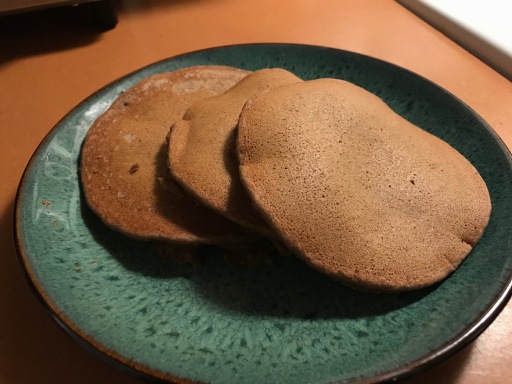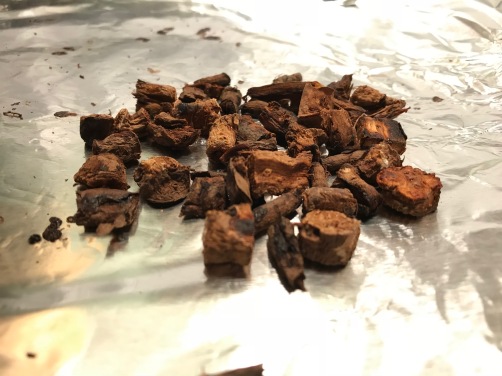
Life in the suburbs is all about convenience. With our abundance of grocery stores, convenience stores, and strip mall bodegas, metro Atlanta land is just a spatial commodity in the 21st Century. Our society places its value in its ability to house some venture… not so much in its beautiful natural resources. Besides a handful of businesses named after the Chattahoochee River or neighborhoods named for the forests they replaced, most of our commercial activity is not intimately tied to the nature of the land we sleep on, drive on, and work on. Too much convenience can skew our perspective. As the great conservationist Aldo Leopold said:
“There are two spiritual dangers in not owning a farm. One is the danger of supposing that breakfast comes from the grocery, and the other that heat comes from the furnace.”
I’m not a farmer and I struggle to maintain a small garden in the summer. I can produce a handful of zucchinis, tomatoes, and cucumbers, but the Piedmont produces a wealth of its own edible plants between its impervious surfaces. In the spirit of Leopold, I’ve been attempting to learn as many edible plant recipes as I can using what I can forage around here. The availability of these edibles is dictated by the seasons. For anyone serious about this hobby, I would highly recommend 1) positive plant ID skills and 2) the Peterson Guide to Edible and Wild Plants (and not the advice of this blog). That said, the following are some of my favorites I’ve ate (and drank):
Acorn Pancakes (Flour / Autumn)
The first time I ever wanted to eat wild edibles was after reading Jean Craighead George’s My Side of the Mountain as a nine or ten year old. In that book, a boy runs away from New York City and ekes out a living in the Catskill Mountains. At some point he makes use of acorns by making pancakes out of them.
I found a load of acorns from one particularly productive white oak on the edge of a parking lot. I hastily loaded them up in a spare grocery bag I had on hand (the irony is not lost on me) and hoped no one saw me from their window wondering what I was doing.

Acorns are tricky to prepare as they contain harmful tannins which must be removed. To produce flour from the acorns, you must crack open each acorn and select nuts without blemish (from going bad or from pests getting there first). After baking a handful of shelled acorns to remove moisture, then grinding, then repeated washing to remove tannins, then re-drying, then grinding, I was finally left with a flour:

Most online recipes for acorn pancake batter instruct you to add one part regular all-purpose flour to the mixture, which I obliged. I also added a bit of salt, baking soda, egg, and sugar to round out the batter, though I tried not to over season the mixture as that would have detracted from any natural taste.

The pancakes weren’t bad at all, though I didn’t go all-in on them as I didn’t 100% trust my inaugural attempt at rinsing away the tannins. From the small bite I did take, I got a very plain and subtly nutty taste. Tannins are bitter, so maybe my rinsing process was OK after all. My wife tried a small bite and after a unimpressed “huh” described the pancakes as tasting “earthy.”
Kudzu Jelly (Condiment – Late Summer/Early Fall)
Kudzu is a perennial vine and perennial subject of conversation among southerners. The highly invasive plant was brought over from Asia to feed livestock and was later distributed to combat soil erosion. While kudzu may have helped to stabilize slopes, its aggressive growth and love for edges and open sun along roadsides and railways allowed it to thrive in Georgia and choke out native plants that prefer the same space. Today, it remains a ubiquitous scourge of land managers. So hey- if you can’t beat it- eat it. So I did.
Kudzu produces fragrant blossoms in the late summer or early fall. The smell is similar to an imitation-grape flavor; it’s sickly-sweet. I got a potent whiff of this fragrance while conducting a survey in northwest Georgia and decided to collect its blossoms to make jelly with.

The process involves cleaning, reduction by boiling, and traditional jelly making with pectin, sugar, and mason jars. I would not advise collecting kudzu blossoms unless you know there is no pesticide treatment in that location (that should go without saying for any of these). I think I overdid the sugar as it was overwhelmingly sweet; the bit of kudzu I tasted in there was similar to the smell, but in a good way.


Sumac “Lemonade” (Drink – Summer)
When I made a summer drink out of sumac, I loved hearing peoples’ reaction: “YOU’RE MAKING IT WITH SUMAC? WHAT?! DAN!” The words “sumac” and “poison” may be inextricably tied together, but poison sumac (Toxicodendron vernix) is only one plant that claims “sumac” as part of its common moniker. Poison sumac is in the same genus as poison ivy (Toxicodendron radicans), a separate genus from smooth sumac (Rhus glabra), winged sumac (Rhus copallinum), and staghorn sumac (Rhus typhina). While all four are in the same family (Cashew), the latter three are non-poisonous. As such, I used the berry fruit of one (smooth sumac) to make a simple and safe summer drink with.
Know your plant ID for this one! In general, the four sumacs listed above have compound leaves, but the leaflets on a poison sumac are more broadly shaped than the others. This drink is made from smooth or staghorn sumac.

The process is extremely simple and involves soaking the fruit cluster in water, “breaking” the berries (I used a potato masher), filtering into a container of your choice (I used cheese cloth and Ikea glass bottles), and sugar to taste. The berries taste perfectly sour, so when prepared with sugar, the drink tastes almost identical to lemonade. In my opinion, this is probably the best-tasting wild edible on this post.


Sweetgum Gum (“Candy” – Year-Round)
The sweetgum tree can be easily identified by its star-shaped leaves or its fruits, which my mom jokingly refers to as “porcupine eggs.” It’s genus name Liquidambar can practically be read in English- “liquid amber.” The name refers to the resin-like sap that flows from wounds of the tree. The sap- also known as storax- is said to have health benefits, including relieving skin problems, ulcers, and coughs as well as being a strong antimicrobial agent.
This edible is as simple as finding sap flowing from a sweetgum’s wound. After coming across dozens of sweetgums on a recent erosion control inspection, I finally found what I was looking for on a grizzled tree:

At first, the sap was hard like peanut brittle. After chewing a bit, it loosened into a very potently sticky-to-the-teeth gum. The sap was not sweet- apparently it is called that because it is relatively sweet compared to black gum, which is sour-tasting. It tasted similar to how roses smell and had a bit of a synthetic-like bitterness. I’d say it was 3/4 fragrant rose and 1/4 freshly-installed carpet. Not all that bad, although I was still cleaning bits of it out of my teeth hours later.
Paw Paw / Elderberry Custard (Dessert – Summer)
Paw paw is found in north Georgia and is a tropical-looking, shade-loving understory tree that loves moist bottomlands. It produces a large pale-green fruit that ripens in the summer. I came across a stand of paw paws loaded down with ripened fruit while on a survey and collected a few to sample.

The “meat” of ripened paw paw fruit is extremely mushy- much like an over-ripened banana. The texture made me wonder if I was too late in picking it. The inside of the mushy mess is loaded down with large seeds that have to be picked out.
Around the same time, I had collected elderberry fruits along the edge of a utility easement. The tartness of the tiny fruits were a perfect compliment to the sweet banana-tasting paw paw fruit. As these were eaten in their raw form, no further preparation was required and overall it was a good custard.


Dandelion Root Coffee (Drink – Year-Round)
Perhaps the perfect nexus between ubiquity and easy identification is the dandelion. Its bright yellow flowers, love for full-on sun, and the metro area’s abundance of maintained open areas make it an easy-to-spot plant. Young leaves from the plant can be eaten raw. To me, they taste a lot like bitter arugula. If you’re out of season for young leaves (or just simply don’t trust the plant to be free of Round Up/dog urine), then you can always prepare dandelion root coffee. “Coffee” from dandelion roots is technically a tea, as the preparation involves steeping.

Tall/large clumps of dandelions are preferable as they provide the most bang for your buck and are the easiest to uproot. I collected four or five clumps and separated the long taproots. I cleaned the roots as best as I could and cut them up into small pieces. After roasting, I was left with browned bits with a hue and color similar to medium roast coffee:

I ground these pieces up in my coffee grinder and placed in the Teavana to steep. After several minutes, I drained the coffee/tea into a mug and had a sip. It was surprisingly good! The drink was smooth and had a distinctly nutty taste with maybe a hint of chicory? I’m satisfied with simply trying some of these edibles, but this one was worthy of complete consumption. And that’s good for me (or anyone who tries this): dandelion roots are said to help eliminate body eliminate toxins, strengthens the immune system, balances blood sugar levels, relieves heartburns and soothes digestive issues. Though it may be crucial to note for some: no caffeine fix can be found here! Which I guess makes it a good substitute for those that need to avoid one of our society’s favorite chemical compounds.

There’s a distinct satisfaction gleaned from foraging and preparing food for yourself. For me, it’s only a hobby, but this hobby connects me to the land and keeps my perspective focused. I can always use a bit of that in the bustle of Convenience Land.
Like this:
Like Loading...